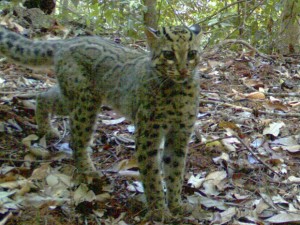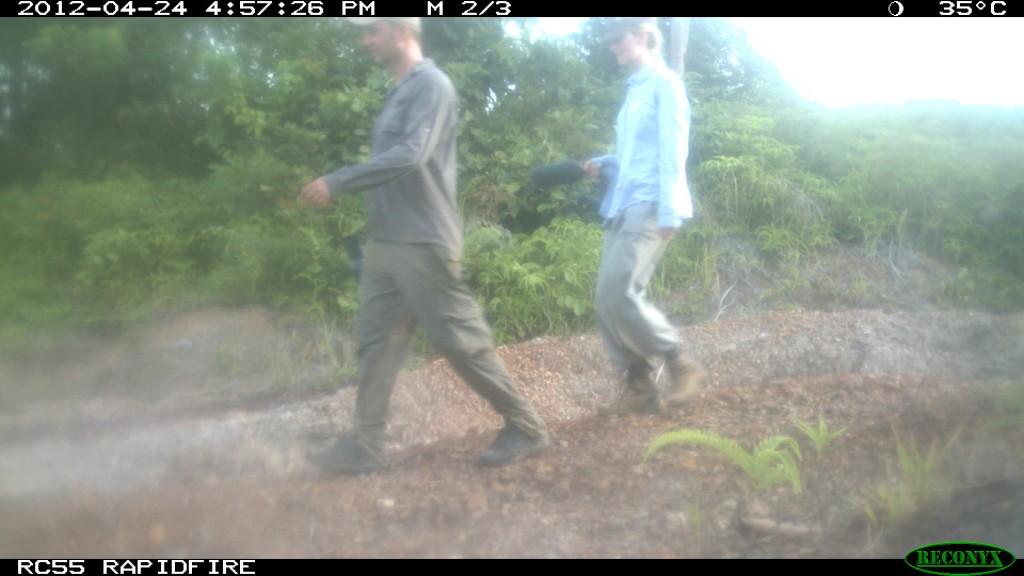Search Results for Tag: Indonesia
The climate-volunteers of Indonesia
What do you expect when you are visiting a climate protection project, supported by the United Nations World Tourism Organization (UNWTO)? I was pretty sure to find some supporting staff members who are well payed to do their green jobs. But what I found at Pangandaran, a bathing resort at the Southern coast of Java, was a lot more – a large number of Indonesian people are taking action themselves, as volunteers in the project. The motivations may be different, but all of them agree that something has to be done, sooner, not later.
Apip Winayadi is an activist for Sundanese Culture, he sees his task hidden in history:
Apip Winayadi, Environmental Activist from DW_Global Ideas on Vimeo.
When a terrible Tsunami rolled over the region in 2006, leaving more than 600 people dead, almost everything was destroyed. Mangroves had been ripped of the ground, coral reefs where smashed by the power of the wave. But also the livelihood of the whole population layed down, without any infrastructure or hotels tourism collapsed completely. But the catastrophe caused a new dawn with a lot of opportunities for the future, Encih Sarsih says. She is the principal of an elementary school here:
Encih Sarsih, Elementary School Principal from DW_Global Ideas on Vimeo.
The STREAM Project (Sustainable Tourism through Energy Efficiency with Adaptation and Mitigation Measures) focuses mainly on the support of renewable energies (in hotels or restaurants) and a rebuilding of the destroyed environment (reforesting mangroves or building up coral reefs). This is where most of the volunteers are involved, like Bapak Iwa, a fisherman and today also an environmental activist:
Bapak Iwa, Fisherman and Environmental Activist from DW_Global Ideas on Vimeo.
Author: Kerstin Schweizer /ke
An island running dry

Photo: S. Ferse, ZMT
Climate change is looming large in the island state of Indonesia, where rising sea levels pose a major risk. But it’s actually a different problem that might force inhabitants of the Spermonde archipelago lying off Southern Sulawesi to leave their islands: drinking water is running low, and the existing water quality is getting worse.
A team of German and Indonesian scientists is pointing to climate change as a major source of that problem. Many of the islands get their drinking water from a freshwater lens – a layer of drained rainwater that accumulates in the soil. Just one lens is about ten to twenty centimeters deep and covers a large part of the archipelago.
Because of climate change, the island region is expected to be face more and more extreme weather patterns, from droughts to severe rain. But the torrents of water that hit the earth during monsoon seasons don’t have enough time to seep into the soil. Instead, the lion’s share flows over the earth’s surface and into the ocean. And the growing amount of sealed surfaces make matters worse: because the area is densely populated, a lot of ground is covered by streets and buildings. Plus, heavy storms – expected to become more frequent – are washing seawater onto the islands and into wells.
Still, climate change is just partly to blame for the dwindling water resources. Since the beginning of 20th century, not only the number of inhabitants but also the demand for drinking water has doubled. As there are no rules preventing anyone from digging wells anywhere and no official limit on how much water may be drawn from them, many locals have dug wells themselves. But they have little knowledge of the soil’s properties or the freshwater lenses when pumping. And when salty water from deep below mixes with the fresh water near the surface, it becomes increasingly brackish – bad for people and the environment.
Face to face with the tiger
Dieter Hoffmann of Harapan Rainforest knows what a reporter likes to see. “Are you interested in some fresh footprints or photos of a Sumatran tiger,” he asked. Of course I am! Harapan Rainforest has installed a few camera traps in the forest. Sometimes monkeys are fooling around with cameras, because they have learned that there’s something behind the lens. But every now and then a Sumatran tiger crosses one of these cameras and sneeks a peek.
 We walked to one of those cameras. And yes, there were footprints. I hardly knew what to do with my emotions. The prints were fresh, Dieter said. There was a tiger right here, just a few hours ago. My first thought: “Brilliant!” I’m a reporter, I’m always looking for a stunning picture. But right after that first thought my instincts came in: “Are you crazy?!” I thought. What on earth am I doing here on the favorite path of a real Tiger? That’s dangerous! I don’t want to end up in a tiger’s stomach!
We walked to one of those cameras. And yes, there were footprints. I hardly knew what to do with my emotions. The prints were fresh, Dieter said. There was a tiger right here, just a few hours ago. My first thought: “Brilliant!” I’m a reporter, I’m always looking for a stunning picture. But right after that first thought my instincts came in: “Are you crazy?!” I thought. What on earth am I doing here on the favorite path of a real Tiger? That’s dangerous! I don’t want to end up in a tiger’s stomach!
But Axel, my camera-man, could hardly believe his luck and headed forward into the jungle as if looking for nothing but his pet dog.
To make a long story short: We didn’t meet a tiger and we are still not eaten by a tiger. But the photos of the camera trap revealed what really happend: At 9.40 in the morning a female Sumatran tiger passed the camera. We followed – in a safe distance – close to five a clock in the afternoon.
Indonesia’s forests in the spotlight

They’re some of the rarest and most endangered wild cats in the world, and international conservation group WWF captured them on camera. The organization snapped pictures of the Sumatran tiger, clouded leopard, marble cat, golden cat and leopard cat in a patch of forest between a wildlife sanctuary and a national park.
The pictures are stunning, but they present a big problem: the wild cats were photographed in an unprotected forest area that’s being lost to deforestation. That’s why the organization is calling on the Indonesian government to step up efforts to protect its forests. Some of the big companies that surround the forest are wood suppliers, and that’s put much of the land in danger.
WWF has more pictures and information on the endangered animals
Climate Champion Iranildo at the International TUNZA Conference 2011
The British Council International Climate Champion Iranildo de Sousa Ferreira was selected by the United Nations Environment Programme (UNEP) to represent Brazil at the TUNZA International Children & Youth Conference on the Environment. The conference starts today.
 Iranildo de Sousa Ferreira was selected from thousands of applicants from around the world. He will be at the TUNZA International Conference in Indonesia until 01 October .
Iranildo de Sousa Ferreira was selected from thousands of applicants from around the world. He will be at the TUNZA International Conference in Indonesia until 01 October .
Iranildo helped to prepare proposals to be presented in the next United Nations Conference on Sustainable Development – Rio +20, and will evaluate the contribution of youth to the International Year of Forests and share his experiences of activism and his work with experts in the environmental area.
TUNZA will be held by the UNEP in collaboration with the Government of Indonesia. It will bring together 1400 children and youth, to discuss their role and inputs to the upcoming United Nations Conference on Sustainable Development – Rio+20. Under the slogan “Reshaping our future through a Green Economy and Sustainable Lifestyle”, the conference will also review the contribution of youth to the International Year of Forests and how they can adopt more environment-friendly lifestyles. The conference themes are Rio + 20 (Green Economy) / Green Lifestyles, Forests, Sustainable Consumption and State of the Global Environment from the youth perspective.
“This is not a time for pessimism or to turn a blind eye to environmental problems. It is time for constructive and decisive action because the alert signal has been given.” Iranildo says.










Feedback